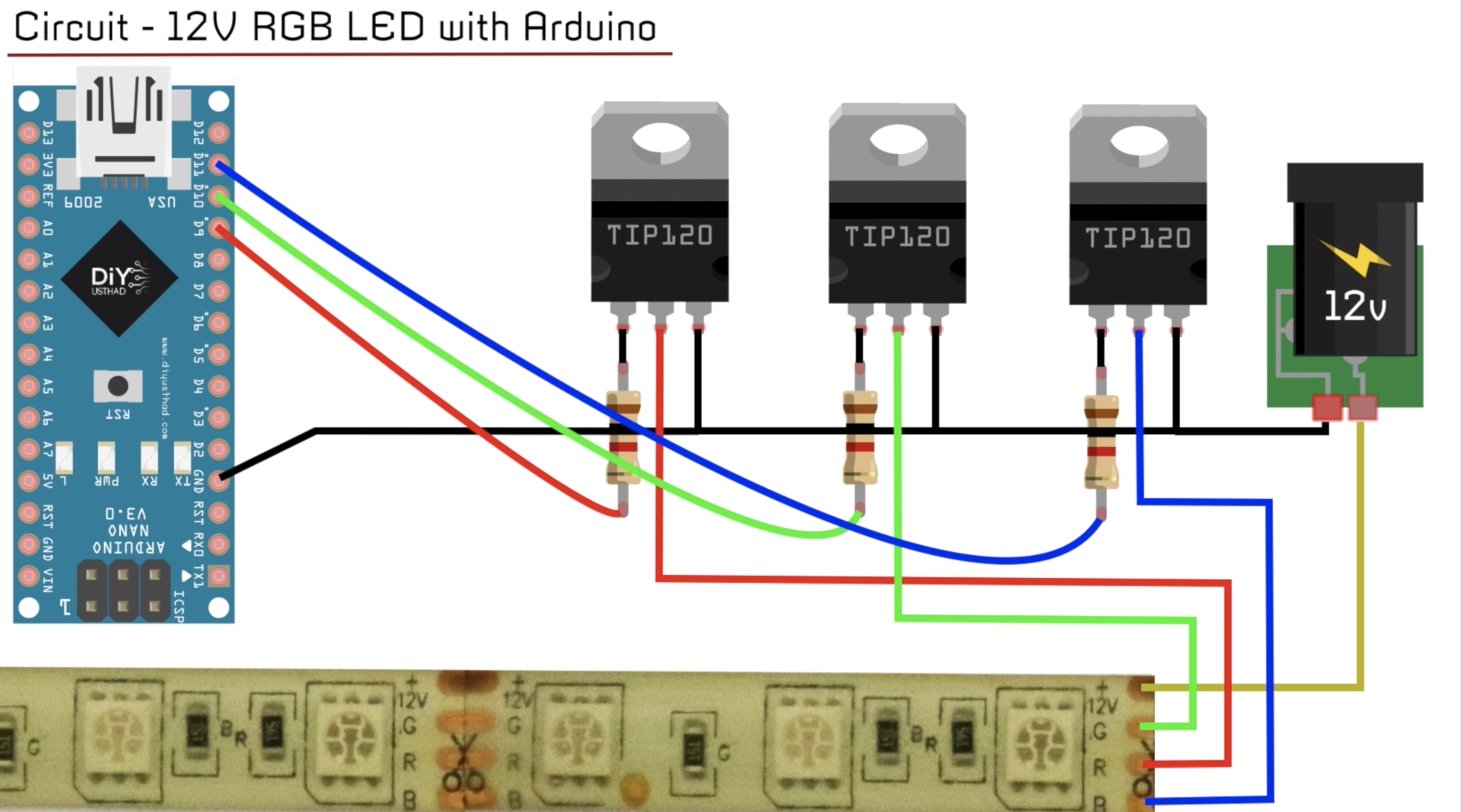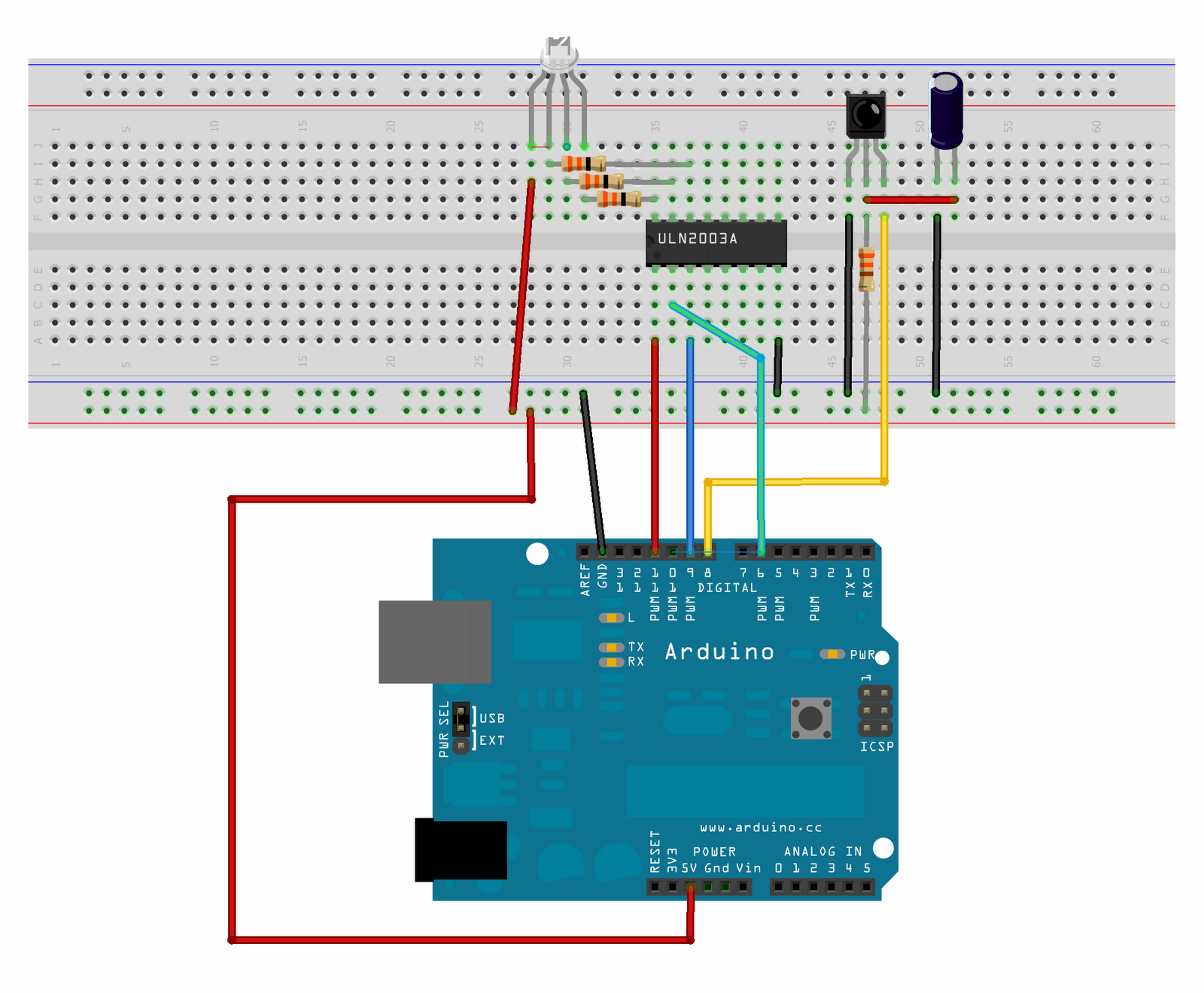

- #Arduino rgb led brightness control how to#
- #Arduino rgb led brightness control full#
- #Arduino rgb led brightness control software#
- #Arduino rgb led brightness control code#
- #Arduino rgb led brightness control zip#
the entire sketch compiles down to about 6.5K on AVR. Although this sketch has eight (or more) different color schemes, run this sketch, and watch the pretty lights as you then read through USING palettes is MUCH simpler in practice than in theory, so first just animation on the fly, quickly, easily, and with low overhead. These compact palettes provide an easy way to re-colorize your This example shows several ways to set up and use 'palettes' of colors
#Arduino rgb led brightness control code#
Go to File > Examples > FastLED > ColorPalette or copy the code below.
#Arduino rgb led brightness control zip#
zip folder and you should get FastLED-master folder

In this example, the WS2812B LED strip will be powered using the 5V Arduino pin. If you use an external power source, don’t forget to connect the power source ground to the Arduino ground. An AC to DC power adapter that provides 5V and 2A should do the job: Make sure you select a power source that matches the strip’s needs. This means that for every 30 LEDs, the strip may draw as much as 1.5 A.
#Arduino rgb led brightness control full#
At 5V, each LED draws about 50mA, when set to its full brightness. The LED strip should be powered using a 5V power source. It’s more handy if you want to connect the strip to an Arduino or to a breadboard. I’ve decided to cut the connectors, and solder header pins. These strips come with connectors at each end. You can adjust its size by cutting the strip with a scissors in the right place (the proper places to cut the strip are marked). As you can see, the strip is divided into segments, and each segment contains one RGB LED. This kind of strips are very flexible and can be cut to any length you want. In the following figure you can see the chip inside the LED. This means that you can control lots of LEDs using just one digital pin of your Arduino. This allows a communication via a one-wire interface. These LEDs have an IC built right into the LED. This LED strip is made by WS2812B LEDs wired in series. You can control the brightness and the color of each LED individually, which allows you to produce amazing and complex effects in a simple way. In my opinion, this is the coolest type of LED strips. So, they can be left outside at the rain and dust without any problem.

It is 5 meters long and the LEDs are enclosed in a weatherproof silicone. In the following figure you can see my WS2812B LED strip.

You can visit Maker Advisor and find the WS2812B RGB LED Strip best price. Choose the one that best fits your purposes. The WS2812B addressable LED strip comes in several models that differ in size, sealant or LED density. The information in this post also works with other similar LED strips, such as strips of the WS28XX family, Neopixel strip and others. Next, people might want to try and control the brightness of an LED with software.This post is about the WS2812B LED strip, which is an addressable RGB LED strip. Once this sketch is downloaded onto your Arduino, you should see the onboard LED blink on and off until power is removed.Īs you might expect, the thrill of watching the LED blink wears off pretty quickly. On Arduinos, there is an LED and current-limiting resistor on board already (and connected to pin 13), so there is nothing really to hook up for this first experiment. the loop routine runs over and over again forever:ĭigitalWrite(led, HIGH) // turn the LED on (HIGH is the voltage level)ĭigitalWrite(led, LOW) // turn the LED off by making the voltage LOW initialize the digital pin as an output. the setup routine runs once before the loop() function The Arduino blink sketch shown below is an example:
#Arduino rgb led brightness control software#
Typically, they hook up an LED in series with a current-limiting resistor, connect it to an output pin, and write some simple software to make it blink.
#Arduino rgb led brightness control how to#
One of the first experiments people learning about microcontrollers usually perform is how to control an LED.


 0 kommentar(er)
0 kommentar(er)
